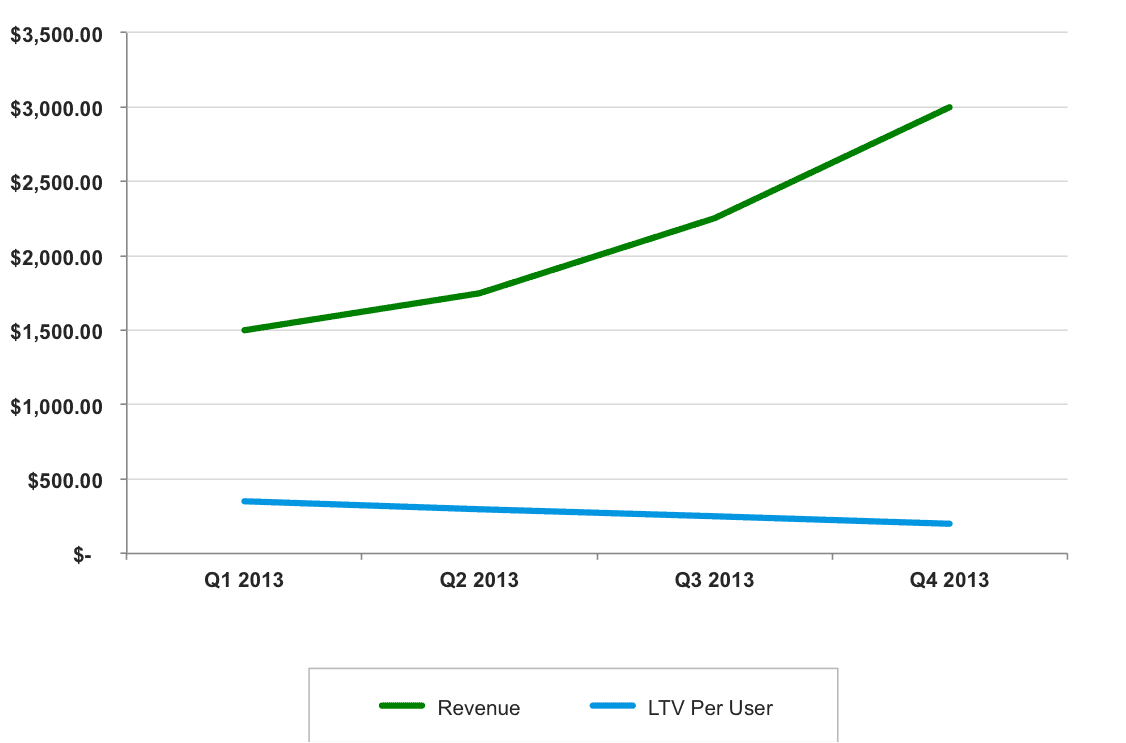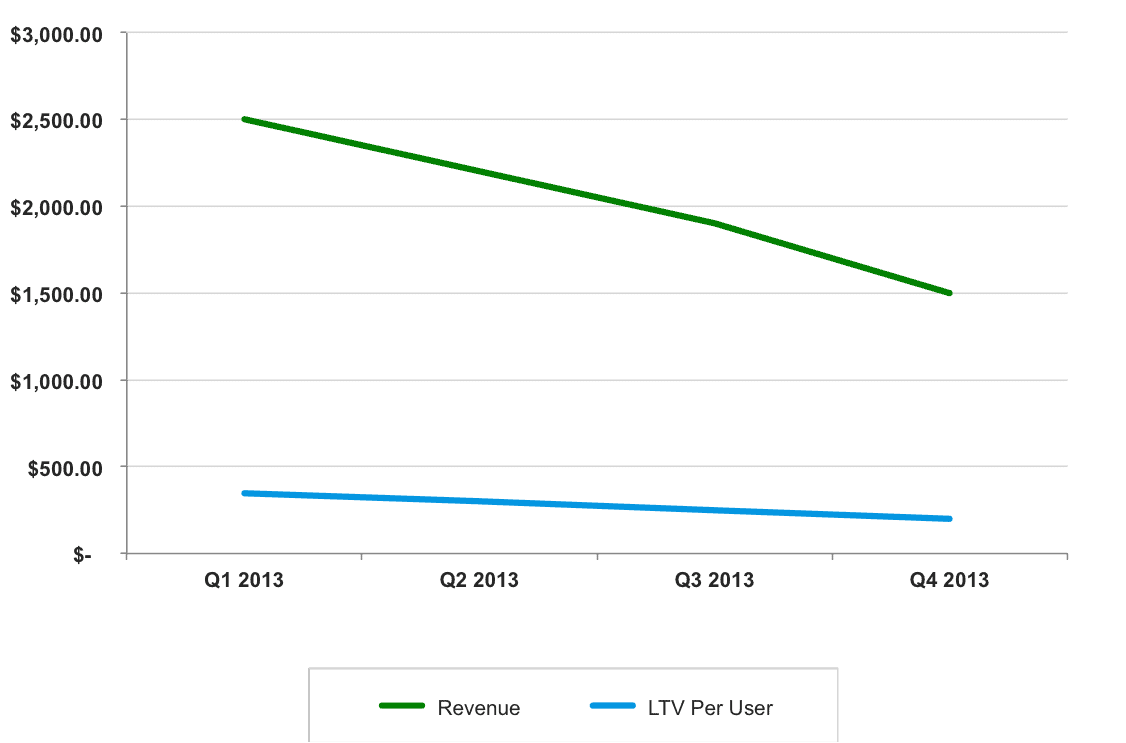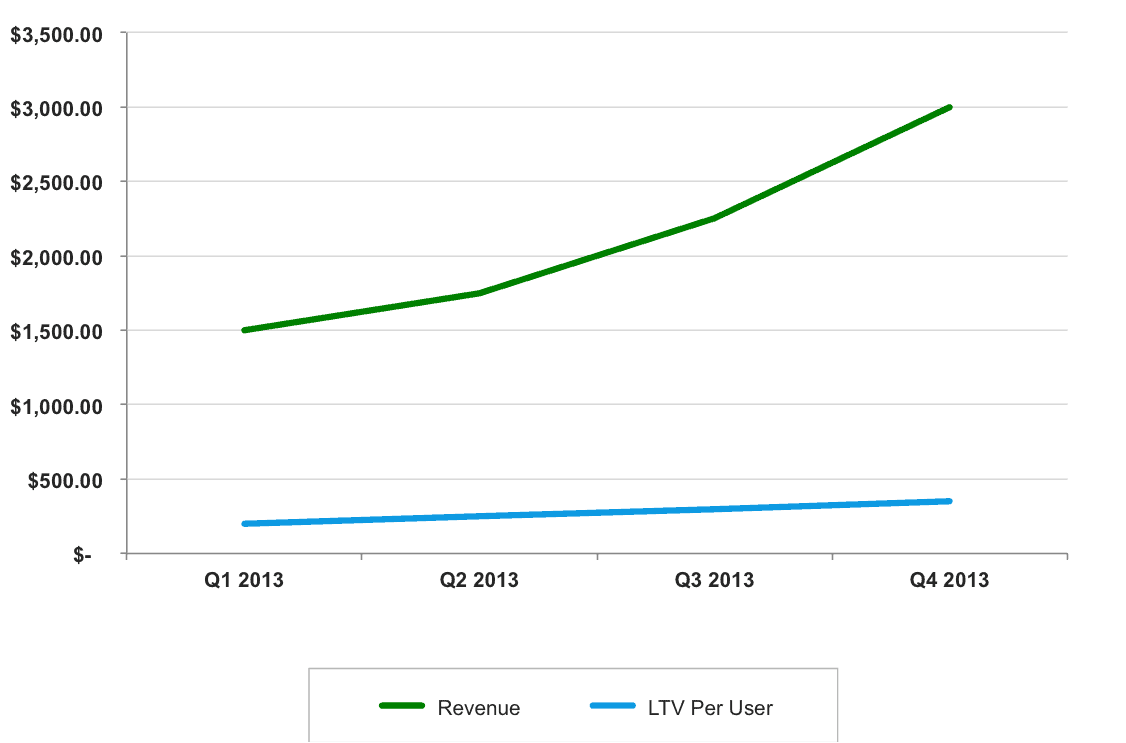As app marketers, we spend a lot of time trying to gain insight into what’s going on with our users at every stage of the marketing funnel. At the top of the funnel we focus on user acquisition and return on ad spend, in the middle of the funnel we focus on user engagement and event tracking, and at the bottom of the funnel we focus on conversion and monetization. With all these metrics to keep track of, it’s sometimes hard to focus on the big picture. That’s where user lifetime value (LTV) comes in.
User LTV is the definitive metric when it comes to quantifying your app’s success over time. You may see big improvements in user acquisition, or skyrocketing engagement with one particular feature, but if those users don’t stick around your app and ultimately convert, your app isn’t succeeding in the areas that matter most.
Defining LTV for Your App
User LTV is a measure of a user’s value over time. You can choose to define user LTV in a number of ways, but it must be a quantifiable metric that correlates to specific actions within your app. In an app that generates user-driven revenue, user LTV will likely be defined in dollars as the amount of money a user has spent in your app over time.
If your app isn’t monetized through user-driven revenue, there are alternative ways to track user LTV. We’ll explore these alternative measures in greater depth in a different post next week!
Isn’t Tracking Revenue Alone Enough?
If overall revenue is increasing, then your app is in good shape, right?
Not necessarily. If increases in revenue are primarily driven by new user acquisition rather than by retaining users who continue to spend, you’re putting yourself at risk of experiencing a revenue bubble that will burst as soon as new user acquisition slows. An app monetization strategy that focuses on retaining high value users and enabling them to spend in your app is more sustainable than a “churn and burn” model that requires a consistent supply of fresh users.
Tracking LTV can help you get ahead of previously unforeseen problems in your revenue flow. Take a look at the example scenarios below:
In this situation, net new revenue is increasing, but LTV is declining. This means you need to shore up your new revenue acquisition campaigns to ensure revenue flow continues or start allocating resources to increasing LTV — preferably both!
If you see net new revenue trending downwards with LTV headed in the same direction, you’re on the path to your entire revenue channel drying up.
This scenario is the picture of health; net new revenue from user acquisition, LTV and overall revenue are all trending upwards.
Using LTV for Smarter Acquisition Spend
User acquisition isn’t just a numbers game – at least not in the way you might think. The number of new users you bring in matters, but not nearly as much as how much those users ultimately spend in your app. To drive revenue you need to target and acquire high value users.
A mobile analytics solution should let you track LTV by acquisition source or campaign, so you can identify which acquisition sources or campaigns are bringing in the highest value users, and which are bringing in lower value users. With this understanding, you can optimize your campaigns and advertising spend to focus your resources only on the sources and campaigns bringing in the most valuable users. Cutting spend on campaigns that underperform in terms of user LTV will reduce your overall marketing spend. Bringing in more high value users will increase your overall revenue. It’s a no brainer if you’re looking to improve your bottom line!
Enriching Your LTV Analysis With Segments
Sources and campaigns are only one filter for understanding LTV. If you can identify your highest value segments by other filters, such as specific actions high value users take or events in the app, then you can try to further increase average LTV by encouraging these behaviors through marketing or product changes.
Example:
Say you run an mCommerce app. Because you’re tracking LTV of users who perform certain key actions, you observe that users who perform an in-app search have a higher average LTV than users who don’t.
Now you can form a hypothesis: if you can encourage more users to search, than you can increase average user LTV. To test the hypothesis, encourage more searches either by sending an in-app message to users who haven’t searched, by making the search tool more prominent, or doing something else to encourage user searches!
Key Takeaways
User LTV is an essential metric for any mobile marketer to track. Once you’ve defined LTV for your app, you can use it to optimize for your highest value acquisition sources, encourage more lucrative in-app behaviors, and ultimately drive more revenue.




